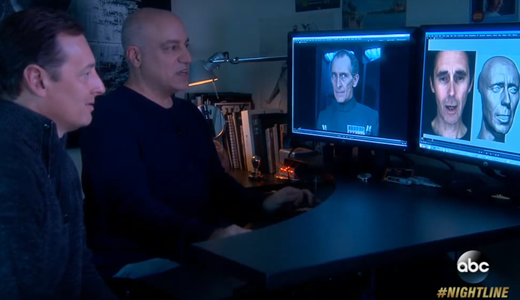We often plumb the depths of moral ambiguity in our media reviews here at Plugged In. But there’s a new ethical controversy brewing that, to my mind, defies an easy or obvious moral resolution.
The conundrum, simply put, is this: In what context is it acceptable to use a computer-generated image of a deceased star in a new movie (or TV show or commercial, for that matter)?
The question began to receive more attention when Peter Cushing “starred” as a key Imperial character in last year’s Rogue One: A Star Wars Story. I say “starred,” because Mr. Cushing hasn’t been with us since 1994. Still, using sophisticated CGI paired with an actor whose face was similar, shape-wise, to Cushing’s, the effects wizards over at Industrial Light and Magic conjured a likeness that looked amazingly close to the genuine article. If you didn’t know better, in fact, you might not have had any idea that Cushing’s “reprisal” of his role as the icily evil Grand Moff Tarkin was anything but real.
A recent in-depth segment of ABC’s show Nightline went behind the scenes to explore exactly how Cushing was brought back for Rogue One.
Now, however, Disney’s got a much bigger problem: the death of Carrie Fisher, who will forever be known in our pop-culture mythology for her portrayal of the iconic Princess Leia. Fisher had finished her scenes for the next installment of the Star Wars saga, the as-yet-untitled Episode VIII, which is scheduled to land in theaters next December.
But she reportedly had a large role in Episode IX, as well, the final installment of this third Star Wars trilogy. What to do? Rewrite the script? Or perhaps … digitally reanimate Carrie Fisher’s likeness?
Reports are already swirling that Disney is in discussion with Carrie Fisher’s estate regarding a digital version of her in the final film. Disney quickly denied those rumors. But when it comes to one of the most beloved characters in, arguably, the most influential movie franchise of all time, I can see why Disney’s Lucasfilm division would be exploring all of its options.
Apart from the obvious creepiness factor—the term “uncanny valley” has been coined to describe these digital representations of deceased or older actors—the question remains about the ethics of digitally recreating someone onscreen. Is it morally or ethically wrong to do so if an actor or actress’s estate has given permission? What is it about this visual expression of something that’s not real that makes us so squeamish? After all, the spaceships, battles and creatures in Star Wars obviously aren’t real, either. But we feel no such ethical twitches when it comes to them.
I wonder if part of that reflexive squeamishness has to do with our inherent dignity as human beings, as people created in God’s image. I wonder if recreating a digital version of someone who’s died somehow implicitly devalues that person by projecting a depiction of him or her that isn’t real, and over which they now no longer have any say.
I’m not sure there’s a hard-and-fast theological answer to this question. But it’s curious to me that so many people instinctively find the idea of digital representation inherently distasteful, and perhaps even ethically or morally out of bounds. To me it suggests that we still value the dignity of a real person’s real life and appearance … even if we can’t articulate exactly why we should care so much about it.






Recent Comments